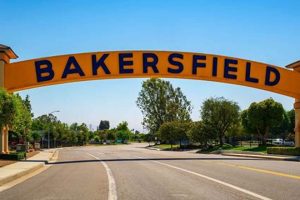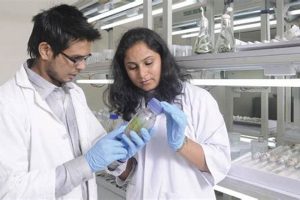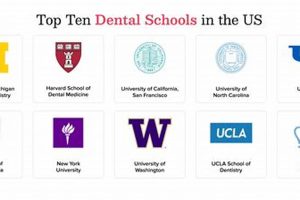Superior veterinary programs specializing in large animal medicine provide comprehensive education and hands-on training in the care of livestock and other sizeable creatures like horses, cattle, and pigs. These programs often feature advanced facilities, renowned faculty with specific expertise, and opportunities for practical experience in diverse settings, including farms, ranches, and specialized equine or bovine practices. An example of a program component might include advanced surgical techniques for colic or lameness in horses.
High-quality training in large animal veterinary medicine is crucial for ensuring the health and welfare of these animals, which play significant roles in agriculture, food production, and the broader economy. Skilled veterinarians are essential for disease prevention, treatment, and improving overall animal management practices, thus contributing to sustainable agriculture and food security. Historically, veterinary specialization has evolved alongside advances in animal husbandry and the growing recognition of distinct health challenges faced by different species. The increasing complexity of veterinary care has led to a greater demand for advanced training focused on specific animal groups like large animals.
This article will further explore key factors to consider when evaluating veterinary schools with a focus on large animal medicine, including program curriculum, faculty expertise, clinical opportunities, and research initiatives. It will also delve into career prospects and specialization options available to graduates of these programs.
Tips for Selecting a Superior Large Animal Veterinary Program
Choosing the right veterinary school is a crucial step for aspiring large animal practitioners. Careful consideration of several key factors can significantly impact future career success and satisfaction.
Tip 1: Evaluate Program Focus and Curriculum: Thoroughly examine the curriculum for a strong emphasis on core large animal disciplines, including surgery, internal medicine, reproduction, and preventative health. Look for opportunities to specialize in areas like equine, bovine, or swine medicine.
Tip 2: Assess Faculty Expertise and Research: Investigate the faculty’s credentials and research interests within large animal disciplines. A program with faculty actively involved in research offers opportunities to participate in cutting-edge advancements in veterinary care.
Tip 3: Prioritize Hands-on Clinical Experience: Seek programs providing extensive practical experience with diverse large animal species. Look for rotations in various settings, including university hospitals, private practices, and specialized facilities like equine clinics or dairy farms.
Tip 4: Consider Facilities and Resources: Evaluate the quality of teaching hospitals, laboratories, and other resources dedicated to large animal care. Modern facilities equipped with advanced diagnostic and surgical equipment are essential for comprehensive training.
Tip 5: Explore Externship and Internship Opportunities: Investigate opportunities for externships and internships that allow students to gain practical experience in different large animal settings and broaden their professional network.
Tip 6: Research Career Support and Placement Services: A strong career services department can assist with job searches, internships, and networking opportunities, helping graduates secure positions in their chosen field.
Tip 7: Assess Program Location and Environment: Consider the geographical location and the surrounding agricultural community. A location with a strong agricultural presence provides a richer learning environment and increased opportunities for practical experience.
By carefully considering these factors, aspiring veterinarians can identify programs best suited to their individual career goals and contribute to the advancement of large animal veterinary medicine.
In conclusion, selecting the right veterinary program requires careful evaluation of academic rigor, clinical opportunities, faculty expertise, and resources available to students. A well-informed decision will pave the way for a rewarding and impactful career in large animal veterinary medicine.
1. Curriculum
A comprehensive and rigorous curriculum is the cornerstone of any top-tier large animal veterinary program. It provides the foundational knowledge and practical skills necessary for success in this demanding field. A well-structured curriculum should blend theoretical instruction with hands-on clinical experience, preparing graduates for the diverse challenges of large animal practice.
- Core Disciplines:
Core disciplines form the basis of veterinary medical education. These include anatomy, physiology, pathology, pharmacology, and microbiology. A strong foundation in these subjects is essential for understanding animal health and disease. For example, a thorough understanding of equine anatomy is crucial for diagnosing and treating lameness.
- Species-Specific Instruction:
Superior programs offer in-depth instruction focused on the specific needs of large animal species, such as equine, bovine, porcine, and ovine/caprine medicine. This specialized training covers topics like reproductive management in cattle, lameness diagnosis in horses, and respiratory diseases in pigs. For example, students might learn advanced techniques for embryo transfer in cattle or surgical repair of tendon injuries in horses.
- Clinical Rotations and Practical Experience:
Extensive clinical rotations provide students with invaluable hands-on experience in diverse settings, including veterinary teaching hospitals, private practices, and specialized facilities like equine clinics or dairy farms. These rotations allow students to apply their knowledge and develop practical skills under the guidance of experienced veterinarians. For example, a student might assist with a caesarean section on a dairy farm or perform a lameness examination on a horse at an equine clinic.
- Elective Courses and Specialization:
Many programs offer elective courses allowing students to delve deeper into specific areas of interest within large animal medicine. These electives may focus on advanced surgical techniques, diagnostic imaging, or specialized areas like theriogenology or ophthalmology. This flexibility allows students to tailor their education to their career goals. For example, a student interested in equine surgery could take advanced courses in equine orthopedics.
The integration of these curricular components within a large animal veterinary program ensures graduates possess the knowledge, skills, and experience necessary to provide high-quality care to a diverse range of large animal species. This comprehensive preparation is a defining characteristic of leading veterinary schools dedicated to large animal medicine.
2. Faculty Expertise
Distinguished faculty expertise is a hallmark of leading large animal veterinary schools. Experienced and knowledgeable instructors play a crucial role in shaping future veterinarians, providing mentorship, and fostering a stimulating learning environment. The quality of faculty directly impacts the quality of education and research opportunities available to students.
- Specialized Knowledge and Board Certification:
Faculty members at top-tier programs often possess specialized knowledge in specific areas of large animal medicine, such as equine surgery, bovine reproduction, or swine health. Board certification in relevant specialties, such as the American College of Veterinary Surgeons or the American College of Theriogenologists, signifies advanced training and expertise. For example, a board-certified equine surgeon brings extensive experience in complex surgical procedures and can provide students with specialized instruction in this area.
- Research and Scholarly Activity:
Active involvement in research and scholarly activities demonstrates a commitment to advancing the field of large animal veterinary medicine. Faculty engaged in cutting-edge research contribute to new discoveries and innovations in animal health and provide students with opportunities to participate in research projects. For instance, a faculty member researching novel treatments for equine lameness can involve students in clinical trials, providing invaluable hands-on experience and contributing to scientific progress.
- Clinical Experience and Industry Connections:
Extensive clinical experience and strong connections within the veterinary industry enhance the educational experience. Faculty members actively practicing in the field bring practical insights and real-world perspectives to the classroom. Connections with veterinary practices and industry partners create opportunities for externships, internships, and future employment. For example, a faculty member with strong ties to local equine practices can facilitate externship placements for students, providing valuable networking opportunities and practical experience.
- Mentorship and Student Support:
Dedicated faculty members provide mentorship and support to students, guiding their academic and professional development. Mentorship fosters a positive learning environment and helps students navigate the challenges of veterinary school. Strong faculty advisors provide guidance on course selection, career planning, and research opportunities, helping students achieve their full potential. For example, a faculty advisor can help a student interested in equine medicine tailor their curriculum and identify relevant research opportunities.
The collective expertise of the faculty significantly influences the overall quality and reputation of a large animal veterinary program. A diverse and accomplished faculty contributes to a rich learning environment, fosters innovation, and prepares graduates for successful careers in the field. The presence of renowned experts in various disciplines attracts high-caliber students and contributes to the program’s prestige within the veterinary community.
3. Clinical Opportunities
Extensive and diverse clinical opportunities are a defining characteristic of top-tier large animal veterinary programs. These experiences bridge the gap between theoretical knowledge and practical application, providing essential skills and real-world experience crucial for successful careers in large animal veterinary medicine. The quality and breadth of clinical training significantly influence a graduate’s preparedness and career trajectory.
- Veterinary Teaching Hospitals:
University-affiliated veterinary teaching hospitals provide a controlled environment for students to gain experience with a wide range of cases, from routine check-ups to complex surgical procedures. These facilities offer access to advanced diagnostic equipment and specialized veterinary expertise, allowing students to develop proficiency in various clinical skills. For instance, students might assist with colic surgery in horses, perform diagnostic imaging on cattle, or manage medical cases in small ruminants under the supervision of experienced clinicians.
- Private Practice Externships:
Externships in established private practices expose students to the day-to-day operations of a veterinary business and provide opportunities to interact with clients and manage diverse cases in a real-world setting. These experiences complement the training received in teaching hospitals, offering insights into different practice styles and client communication skills. For example, a student might shadow a veterinarian during farm calls, assist with routine vaccinations and health checks, or observe the management of a busy equine practice.
- Specialized Facilities:
Rotations in specialized facilities, such as equine clinics, dairy farms, or zoological parks, offer focused training in specific areas of large animal medicine. These experiences allow students to develop expertise in particular species or disciplines, aligning with their career interests. For example, a student interested in equine surgery could gain experience assisting with orthopedic procedures at an equine referral hospital, while a student focused on dairy medicine could participate in herd health management and reproductive programs on a large dairy farm.
- Ambulatory and Field Services:
Participation in ambulatory or field services provides crucial experience in on-site animal care, requiring adaptability and problem-solving skills in diverse environments. Students learn to handle and restrain large animals, perform diagnostic procedures in the field, and provide veterinary care in remote locations. For example, a student might accompany a veterinarian on farm calls to treat sick or injured livestock, perform reproductive examinations on breeding animals, or assist with emergency procedures in the field.
The breadth and depth of clinical opportunities directly correlate with the quality of a large animal veterinary program. Graduates with diverse clinical experiences are better prepared for the challenges of veterinary practice and possess a competitive edge in the job market. A comprehensive clinical education distinguishes superior programs and contributes significantly to career success in the field of large animal veterinary medicine.
4. Facilities and Resources
State-of-the-art facilities and comprehensive resources are integral components of leading large animal veterinary programs. These resources directly impact the quality of education and research, providing students with the tools and environment necessary to develop advanced clinical skills and contribute to the advancement of veterinary medicine. The availability of modern equipment, specialized laboratories, and ample learning spaces significantly distinguishes exceptional programs from their counterparts.
- Veterinary Teaching Hospitals:
Modern veterinary teaching hospitals equipped with advanced diagnostic and surgical technologies are essential for comprehensive clinical training. These facilities offer opportunities for students to gain experience with cutting-edge procedures, such as laparoscopic surgery, advanced imaging techniques, and intensive care management. For example, a well-equipped teaching hospital might feature a dedicated large animal surgical suite with advanced anesthesia monitoring systems, specialized surgical instruments, and recovery stalls designed for the unique needs of large animal patients. Access to such resources significantly enhances surgical training and prepares graduates for complex procedures encountered in practice.
- Specialized Laboratories:
Dedicated laboratories for disciplines like pathology, microbiology, and parasitology are crucial for providing hands-on diagnostic training. These laboratories should be equipped with modern microscopes, diagnostic testing kits, and other specialized equipment necessary for accurate disease diagnosis and analysis. For example, a parasitology laboratory might house specialized equipment for fecal egg counts and parasite identification, allowing students to develop proficiency in diagnosing and managing parasitic infections in large animals. Access to well-equipped laboratories fosters diagnostic skills essential for effective veterinary care.
- Imaging and Diagnostic Equipment:
Access to advanced imaging modalities, such as digital radiography, ultrasound, computed tomography (CT), and magnetic resonance imaging (MRI), is essential for accurate diagnosis and treatment planning in large animal medicine. Leading programs invest in state-of-the-art imaging equipment to provide students with hands-on experience in these critical diagnostic techniques. For example, a program with a dedicated CT scanner allows students to gain proficiency in interpreting images and diagnosing conditions such as fractures, internal organ abnormalities, and neurological disorders in large animals. This experience is invaluable for preparing graduates for the diagnostic challenges encountered in clinical practice.
- Libraries and Learning Resources:
Comprehensive libraries with extensive collections of veterinary journals, textbooks, and online databases provide essential resources for research and learning. Access to up-to-date information and research findings is critical for staying abreast of advancements in veterinary medicine and for supporting student research projects. For example, a well-resourced library might subscribe to specialized databases containing veterinary literature, clinical trial data, and diagnostic imaging resources, enabling students to access the latest information and conduct in-depth literature reviews. These resources are fundamental for evidence-based veterinary practice and academic scholarship.
The availability of modern facilities and resources is a key indicator of a program’s commitment to providing high-quality veterinary education. Investing in these resources not only enhances the learning experience but also attracts talented faculty and students, fostering a thriving academic environment and contributing to the overall prestige and reputation of the program within the veterinary community. The integration of cutting-edge technology and comprehensive resources distinguishes leading large animal veterinary schools and prepares graduates for successful and impactful careers in the field.
5. Location and Environment
The location and surrounding environment of a veterinary school significantly influence the quality and focus of large animal veterinary programs. A program’s setting shapes the available clinical experiences, research opportunities, and connections to the agricultural community. Proximity to diverse agricultural operations and specialized veterinary facilities enhances practical training and career prospects for graduates. Understanding the interplay between location, environment, and educational opportunities is crucial for prospective students seeking the best large animal veterinary education.
- Agricultural Landscape and Animal Populations:
Veterinary schools situated in regions with diverse agricultural activity and significant livestock populations offer richer clinical experiences. Schools in prominent dairy regions provide abundant opportunities for bovine-focused training, while those in areas with a strong equine industry offer extensive equine-specific clinical rotations. For example, a school located near a major horse racing track provides unique opportunities for experience with equine athletes and specialized performance horse medicine. The surrounding agricultural landscape directly influences the types and frequency of clinical cases encountered by students, enriching their practical training and shaping their future career paths. This immersion in a specific agricultural setting offers invaluable exposure to the challenges and rewards of veterinary practice within that particular industry.
- Proximity to Specialized Veterinary Facilities:
Locations near renowned referral hospitals, equine clinics, or zoological parks offer access to specialized expertise and advanced technologies. These facilities often collaborate with veterinary schools, providing opportunities for advanced clinical rotations, externships, and research collaborations. For example, a veterinary school near a leading equine referral hospital can offer students rotations in advanced equine surgery, internal medicine, and diagnostic imaging. Access to these specialized resources enhances the learning experience and provides exposure to cutting-edge veterinary practices, preparing graduates for specialized roles within the field.
- Industry Partnerships and Networking Opportunities:
Strong connections with local agricultural communities and veterinary practices create valuable networking and career opportunities. Veterinary schools located in agricultural hubs often foster relationships with local producers, veterinarians, and industry organizations. These connections can lead to internships, externships, and future employment opportunities for graduates. For example, a school with strong ties to the local dairy industry might facilitate internships with dairy farms or veterinary practices specializing in bovine medicine. Such connections provide students with practical experience, mentorship opportunities, and a competitive edge in the job market.
- Rural or Urban Setting:
The choice between a rural or urban setting influences the overall educational experience and lifestyle. Rural programs offer greater immersion in agricultural communities and more frequent exposure to large animal cases, while urban programs provide access to a wider range of cultural and social amenities. For example, a rural program might involve frequent farm visits and participation in community outreach programs focused on livestock health, while an urban program might offer greater access to museums, theaters, and diverse dining experiences. The preferred setting depends on individual preferences and priorities, but understanding the trade-offs between each environment is essential for making an informed decision.
By carefully considering the location and environment, prospective veterinary students can select a program that aligns with their career goals and learning preferences. The interplay of these factors significantly contributes to the overall educational experience and shapes the future career trajectory of aspiring large animal veterinarians. A program’s location not only influences clinical exposure but also cultivates essential professional connections and provides a unique perspective on the role of veterinary medicine within a specific agricultural context.
6. Career Support
Robust career support services are a critical component of distinguished large animal veterinary programs. These services bridge the gap between academic training and professional practice, equipping graduates with the tools and resources necessary to launch successful and fulfilling careers. Effective career support directly contributes to graduate placement rates, career satisfaction, and the overall reputation of the veterinary program. For instance, a program with a dedicated career advisor specializing in large animal practice can provide tailored guidance to students interested in equine surgery, bovine medicine, or mixed animal practice, connecting them with relevant internships, externships, and job opportunities. This specialized support increases the likelihood of graduates securing positions aligned with their career goals.
Comprehensive career services encompass a range of activities, including individual career counseling, resume and cover letter writing assistance, interview preparation workshops, and access to extensive job boards and alumni networks. These services empower graduates to navigate the competitive job market, present themselves effectively to potential employers, and connect with established professionals in their chosen field. A program that hosts an annual career fair specifically for large animal practitioners, for example, provides students with invaluable networking opportunities and direct access to potential employers seeking skilled veterinarians. This direct engagement with the industry facilitates successful job placements and fosters mutually beneficial relationships between the veterinary program and the professional community.
The effectiveness of career support is reflected in graduate outcomes, including placement rates, starting salaries, and career progression. Programs with strong career services demonstrate a commitment to student success beyond graduation, contributing to the long-term professional development and career satisfaction of their alumni. The availability of comprehensive career support distinguishes leading large animal veterinary schools, signaling a dedication to producing well-rounded and highly sought-after graduates prepared to make significant contributions to the field of veterinary medicine. This commitment to career development enhances the reputation of the program within the veterinary community and reinforces its position as a source of exceptional talent for the large animal veterinary profession. Ultimately, strong career support benefits not only individual graduates but also the broader veterinary community by ensuring a pipeline of skilled and well-prepared professionals ready to address the evolving challenges of large animal healthcare.
Frequently Asked Questions
This section addresses common inquiries regarding the pursuit of specialized veterinary training focused on large animals.
Question 1: What distinguishes a top-tier large animal veterinary program?
Exceptional programs are characterized by a rigorous curriculum, renowned faculty with specialized expertise, extensive clinical opportunities in diverse settings (including university hospitals and private practices), access to advanced facilities and resources, and strong career support services. A robust program ensures graduates are well-prepared for the challenges and rewards of large animal practice.
Question 2: How important is board certification for faculty in large animal veterinary programs?
Board certification, such as through the American College of Veterinary Surgeons or the American College of Theriogenologists, signifies advanced training and expertise within a specific veterinary discipline. While not every faculty member will hold board certification, its prevalence within a program often indicates a commitment to specialized knowledge and high-quality instruction. Board-certified faculty bring advanced skills and knowledge to their teaching, enhancing the educational experience for students.
Question 3: What types of clinical experiences are most valuable in large animal veterinary education?
Diverse clinical experiences across various settings, including university teaching hospitals, private practices, specialized referral centers (e.g., equine clinics), and ambulatory services, provide the most comprehensive training. Exposure to a wide range of cases, procedures, and practice styles prepares graduates for the diverse challenges of large animal practice.
Question 4: How does the location of a veterinary school impact large animal training?
Location significantly influences the types of clinical cases and species encountered during training. Schools located in regions with robust agricultural activity, such as prominent dairy or equine industries, provide increased opportunities for specialized training within those areas. Proximity to specialized veterinary facilities also enhances access to advanced technologies and expertise.
Question 5: What career support services should students expect from a quality large animal veterinary program?
Comprehensive career support should include individual career counseling, resume and cover letter assistance, interview preparation workshops, networking events, and access to extensive job boards and alumni networks. These services facilitate a smooth transition from academic training to professional practice.
Question 6: What are the long-term career prospects for large animal veterinarians?
The demand for skilled large animal veterinarians remains strong, driven by the essential role these professionals play in ensuring animal health and welfare, supporting sustainable agriculture, and contributing to food security. Graduates of high-quality programs are well-positioned for rewarding careers in diverse settings, including private practice, academia, industry, and government agencies.
Careful consideration of these factors provides a framework for evaluating veterinary programs and making informed decisions aligned with individual career aspirations.
Further sections will explore specific program examples and additional resources for prospective large animal veterinarians.
Choosing the Best Large Animal Vet School
Selecting among superior large animal veterinary programs requires careful evaluation of several interconnected factors. A rigorous curriculum grounded in core veterinary disciplines and offering species-specific instruction forms the foundation. Experienced, dedicated faculty actively engaged in research and scholarship provide essential mentorship and contribute to a stimulating learning environment. Diverse clinical opportunities, encompassing rotations in teaching hospitals, private practices, and specialized facilities, build practical skills and real-world experience. Access to state-of-the-art facilities, advanced diagnostic equipment, and comprehensive resources further enhances the quality of training and research. The program’s location, whether situated within a thriving agricultural community or a bustling urban center, influences the available clinical experiences and networking opportunities. Finally, robust career support services play a crucial role in connecting graduates with fulfilling and impactful career paths.
The pursuit of excellence in large animal veterinary medicine demands dedication, rigorous training, and a commitment to lifelong learning. By carefully considering these key components of superior veterinary programs, aspiring large animal practitioners can make informed decisions that shape their future careers and contribute to advancing animal health and welfare within the agricultural community and beyond. The demand for skilled and compassionate large animal veterinarians continues to grow, making the informed selection of a veterinary program a crucial step towards a rewarding and impactful career.







